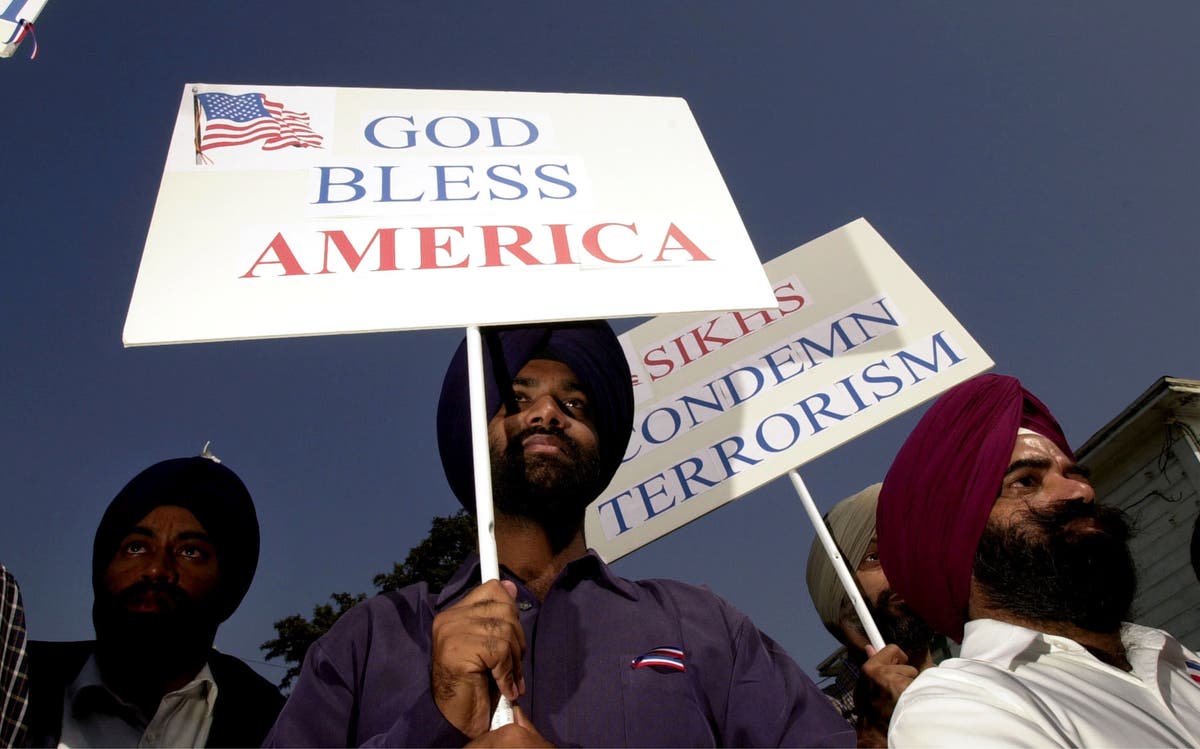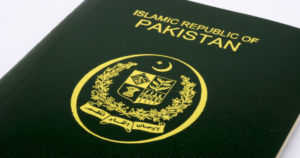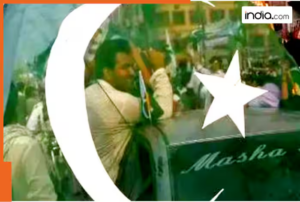
Balbir Singh Sodhi’s family thought America would be different. They fled India’s Punjab province in the 1980s to get away from religious violence. At the time, pogroms against Sikhs killed thousands, often with complicity from police and government leaders.
“I heard that this was the country that had freedom of religion, and this was the country that stands for justice for all colors, creeds, and genders,” his brother Rana says. “When I came here, before 9/11, I never ever had one per cent of thought in my mind that there’s hate that exists in our community in America. I never thought about that.”
Balbir became an entrepreneur in Mesa, Arizona, and owned a petrol station. He would give children free candy and let them use his parking lot to skateboard. When the planes hit the Twin Towers, he talked about trying to fly to New York to help at Ground Zero.
“He wanted to go to New York and help those victims, the people who were still suffering and buried in those buildings, he really wanted to go and help them,” Rana says. “He had that kind of heart.”
On 15 September, Balbir emptied out his wallet at a local Costco to donate to the 9/11 relief effort. That same day, a white man named Frank Roque set out, as he told a waiter four days earlier, “ to shoot some towel heads ”, adding: “We should kill their children, too, because they’ll grow up to be like their parents”.
Roque killed Balbir as he was planting flowers in front of the store, then shot at a Lebanese-American clerk and an Arab family. When police arrested Roque, he screamed that he was a patriot.
Balbir Singh Sodhi is regarded as the first person killed in post-9/11 hate violence. Ten months later, Sukhpal, his brother, was killed driving a cab in San Francisco, in what his family believes was a similar attack.
A portrait of Balbir Singh Sodhi. (Unknown)
Often, the narrative remembered each 9/11 anniversary is that the best of America emerged: brave firefighters and community members banding together to search for victims and process a national tragedy. It is also true that on 12 September, life changed forever for millions of Muslims, as well as Sikhs, Middle Eastern and South Asian people, who suddenly found themselves stigmatised as a national threat. Between 2000 and 2009, hate crimes against Muslims spiked 500 per cent .
For people of colour in America, 9/11 was a double tragedy. It was soon clear they would be made to suffer for the US’s suffering.
“Within hours, we got news of attacks on city streets across the country. This was before social media, YouTube, before we had any channels to tell our own stories,” says Valarie Kaur, a Sikh-American activist and family friend of the Sodhis.
Listservs and text messages served as an alternative news ticker to the one on TV: family members shot and beaten, mosques and gurdwaras (Sikh houses of worship) burned and vandalised.
“It felt like the ground had fallen out beneath me,” Valarie remembers. “Here I was still trying to process the horror of the magnitude of the devastation of 9/11, and all that loss of life, and within hours we had to worry about whether we would survive as a family and a community.”
Her family had been in America for a century, the descendants of farmers who settled in Northern California. Overnight, they were viewed by many as not being ‘real’ Americans anymore. She took time off of university to drive around the country recording stories of people like her, in a film that later became the 2006 documentary Divided We Fall .
For days, TV news circulated photos of the turbaned Osama bin Laden alongside photos of Sher JB Singh , a man mistakenly arrested on a train on 12 September for carrying a kirpan , a blunt, entirely ceremonial dagger meant to symbolise the Sikh duty to stand up against injustice.
Rais Bhuiyan, who emigrated to the US from Bangladesh and worked at a friend’s convenience store in Dallas, immediately began to fear for his safety.
“I could not help but begin to worry,” he tells The Independent. “For many of us, the horror, the fear and the violence was just beginning once the Twin Towers fell. Many customers came to me angry at the gas station. Some threatened me. Some even tried to harm me.”
He hadn’t always felt this way. He arrived in America in 1999, a winner of the so-called “ visa lottery ”, and would spend nights in his first home of New York City cruising along dreamily with a friend who worked for a limo service. Customers were eager to learn about him
“They were curious to know more about me and what brought me to America,” he says. “I very much enjoyed those times. I felt, people are so interested, so curious to know about other cultures, other people. I never felt any kind of discrimination.”
On 21 September, a white supremacist named Mark Stroman asked Mr Bhuiyan that same question, “Where are you from?” before shooting him in the face with a shotgun, part of a rampage in which he killed two South Asian men over the course of three weeks.
On 21 September, 2001, a white supremacist named Mark Stroman shot Rais Bhuiyan at close range in the convenience store where he worked in Dallas, Texas, one of numerous hate crimes targeting Muslims after 9/11. (Courtesy of Rais Bhuiyan)
The crackdown against Muslims in America played out in Washington, too. George Bush won plaudits for giving a speech at the Islamic Center of Washington, DC, on 17 September, telling Americans “ Islam is peace ”, and not to fear their Muslim brothers and sisters.
But his administration wouldn’t take its own advice. It launched a sweeping immigration program called NSEERS , a registry tracking almost exclusively those from Muslim countries in the US that included up to 84,000 people. NSEERS was used to send at least 14,000 Arabs and Muslims into deportation proceedings. FBI informants infiltrated houses of worship. The federal Transportation Security Agency began all but officially subjecting people with beards, turbans, or a certain skin tone to humiliating extra security at airports. George Bush once claimed that Al Qaeda attacked America because “ they hate our freedom ”, but freedom in America after 9/11 would prove to be conditional.
Taken together, the new climate was devastating for people like Rais Bhuiyan. They came to America to find a new place to belong, and that place was violently trying to make them leave. Some did.
“Most Americans are not aware that many people were brutally attacked after 9/11, some were killed, and hundreds of thousands of peoples’ lives were displaced,” he says. “Many people were traumatised even though they might not be attacked physically, but psychologically, mentally, many people were extremely traumatised. I know some of those who left the country because they were extremely afraid of being attacked.”
Rana Singh Sodhi remembers speaking with other Sikhs about whether it would be safer if they took off their turbans, a central pillar of the Sikh faith.
“I should stay in India if I need to do that,” he says. “I choose this country for freedom of religion. I can enjoy my life with my turban and my life, practice what I believe in. Why do I need to take off my turban? People who are ignorant, they need to learn who I am. That’s the beauty of this country.”
Both men, informed by their faiths, became activists, sharing their stories and trying to make their adopted country less hateful. Rais founded an organisation to further that work, World Without Hate .
As is so often the case in America, it was those already the victims of the most inhuman violence who had to teach the country about humanity. That work took many forms. Sikhs, despite being the world’s fifth-largest religion, were not a very visible group in the American mainstream before 9/11, so they set about organising and raising their profile through groups like the Sikh Coalition, which lobbied to stop descrimination at airports and get schools to buy textbooks that educated kids about a diversity of faiths, including Sikhism.
They also intervened in discrimination cases popping up around the country. They launched a long-running federal lawsuit against New York City’s MTA subway system, after it began requiring Muslim and Sikh workers, but not others, to brand religious headdresses with the MTA logo or work out of public view. The case was settled in 2012 . One of the plaintiffs was Sat Hari Singh, a Sikh man who drove his train in reverse to save passengers from smoke-filled tunnels on 9/11.
Rais and Rana also reconciled with the men who hated them. The former had a revelation during a 2009 pilgrimage to Mecca. Mark Stroman, his would-be killer, was on death row, and Mr Bhuiyan began lobbying to stop the killing.
“I thought about my shooter and I realised that by executing him, we would simply lose another human life without dealing with the root cause. I began to see him as a human being like me, not as a killer. I saw him as a victim too,” he says. “I know what it feels like to be on the brink of death and to beg God for a second chance. How could I then deprive another human being of life?”
He was unable to stop the execution, but the two spoke on the phone before Stroman was killed. The man denounced his hateful views and called Rais his brother.
“We did not fail. Humanity won. The love won,” he says. “We lost him physically, but at the end of his life, Mark was at peace. He found kindness, mercy from the same people he once haunted.”
Thirteen years after Balbir was killed, Rana Sodhi ran into Frank Roque’s family while he was buying flowers to mark the anniversary of his brother’s death. He invited them to join him at the gas station, where they held a remembrance and dinner each year.
“I never feel the need for revenge,” Mr Sodhi says. “In my Sikh religion, we don’t believe in eye for an eye. We don’t believe those things. Kindness and forgiveness are very important.”
Roque’s family declined, but Rana found different ways to reach out. On the 15th anniversary of Balbir’s death, he, along with Valarie Kaur, called Roque for the first time. He apologised and said he would ask both God and Balbir for forgiveness in the afterlife. In 2006 , Roque’s death sentence was overturned, a step which the Sodhis supported. Roque has said he hopes to join Rana in anti-hate work once he is released.
“We want him behind bars so nobody gets hurt, but that doesn’t mean we want to take his life because he hurt our family,” Mr Sodhi says. “We don’t feel like we are enemies.” Rana is hoping the Roque family joins them for the memorial this year.
It would be easy to believe this is all behind America, but that’s not the case. Assaults against Muslims peaked not in 2001, but in 2016 , the year Donald Trump took office. He campaigned on promises for “ a total and complete shutdown of Muslims entering the United States ”, which later became his controversial travel ban policy. Hate attacks still rage against Asian-Americans in the age of coronavirus, showing the country hasn’t yet learned how to keep fear from becoming violence.
Attacks targeting Sikhs have continued as well, including a shooting at a Sikh temple in Wisconsin in 2012 by a white supremacist that left six people dead, and another this year at an FedEx facility in Indianapolis , where four of the eight people killed were Sikh, leading community leaders to believe it was another hate attack.
Indian Sikhs place flower petals and candles near pictures of those killed at a Sikh Temple shooting in the United States during a vigil in Mumbai on August 8, 2012. A suspected gunman, 40-year-old Wade Michael Page, allegedly killed six people at a Sikh temple in the United States on August 5, and was shot to death by police at the scene. (AFP via Getty Images)
And things haven’t changed all that much in that most enduring symbol of post-9/11 discrimination: the airport security line.
“Invariably, 99.9 per cent of the time you’ll be pulled aside for a second rescreening, even if the metal detector doesn’t go off,” says Harpreet Singh, a board member of the Sikh Coalition and Harvard University professor. “That’s profiling. It’s illegal in America, but it happens to every Sikh who has a turban and beard.”
Worse than the current discrimination, perhaps, is the fact that for many victims of post-9/11 racist violence, they haven’t even been allowed to be part of the official history of the day, erased from the record even as the country vows to “Never Forget”.
“The victims of and families of post-9/11 hate crimes feel continued pain and trauma, but with no hope for closure, healing, or recognition,” Mr Bhuiyan says. “We all go into hiding while the entire nation mourns every year.”
Their deaths, invariably, are left out of the 2,977 officially recognised as those killed in 9/11.
That’s why Valarie Kaur, the activist, hopes on the 20th anniversary of 9/11, Americans see Balbir Singh Sodhi’s gas station as a second Ground Zero, a place to reckon with the full impact of those years and work towards something better.
“My hope is that this 20 year anniversary will be different and that we will be able to expand our hearts to grieve the 3,000 people who died that day and recognise and mourn for all of the people whose lives have been lost or shattered by the way our nation has responded to 9/11 in the last 20 years,” she says.
That expanded frame of care is the key behind her current endeavour, The Revolutionary Love Project , which teaches community building and anti-racist activism. And despite some of the setbacks of the post-9/11 years, things like the Black Lives Matter movement give her hope.
“It’s so easy to feel like nothing has changed, but what we saw last summer was white people standing in front of Black people, kneeling in the streets in front of police officers,” she says. “We have never seen a multi-racial uprising for Black lives in human history. I take that and say, ‘If there are more of us than ever before, if we are not alone anymore, what might we be able to do?’”
Rana Sodhi believes if we take the long view, there’s still reason to be optimistic. His parents fought for, and then finally saw, India secure its independence. In his own lifetime, the civil rights movement has won new rights for minorities in the US.
“Those things didn’t happen just like that,” he says. “It took years to make a moment, to educate people to do these things. But it has worked.”






